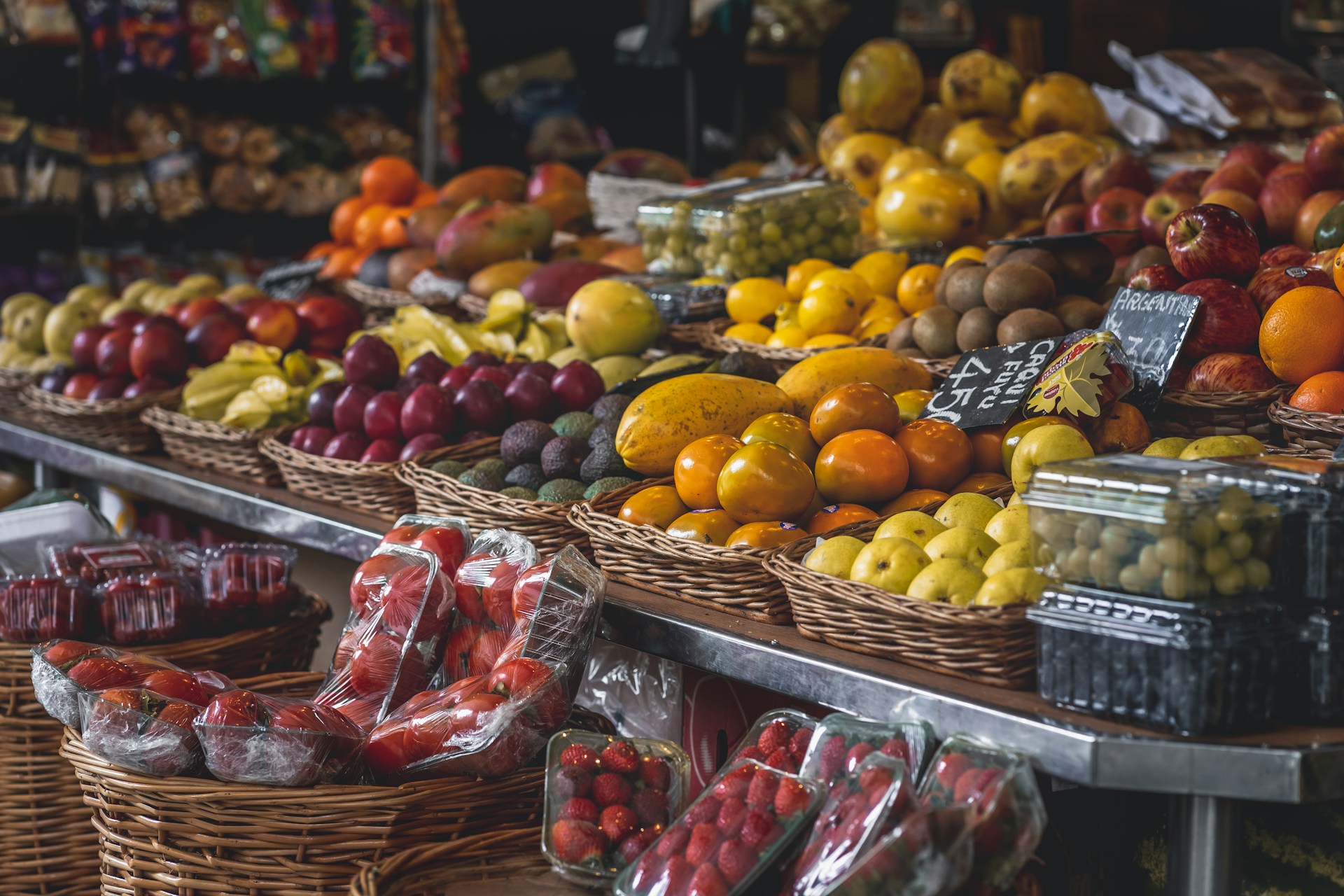In the highly competitive realm of fresh produce retail, being equipped to handle unexpected emergencies can make a substantial difference in your business continuity and integrity.
Emergencies can range from natural disasters to product recalls, posing a serious challenge to the smooth operation of your business.
Adequate preparation not only ensures that you keep the trust of your customers intact, but also safeguards your reputation in the market, where word of mouth and perception can make or break any business.
But running drills and having response strategies on paper are different from real-world scenarios that demand prompt and effective actions.
This calls for actionable, concrete and pragmatic advice.
This article aims to keep you informed and prepared to handle such situations with grit and effectiveness.
Contents
- Emergency Response Tips For Produce Retailers
- 1. Train staff in First Aid and CPR
- 2. Establish clear evacuation routes and protocols.
- 3. Implement emergency alert and communication system.
- 4. Conduct regular fire and safety drills.
- 5. Stock and maintain emergency supplies kits
- 6. Keep emergency contacts posted and updated
- 7. Regularly Check and Service Safety Equipment
- The Bottom Line
Emergency Response Tips For Produce Retailers
1. Train staff in First Aid and CPR
The first and foremost point in ensuring the safety of a produce retail facility is to train all staff in first aid and CPR.
As a retailer dealing with a large quantity of produce, many hazards can come into play and, in those situations, even a basic familiarity with first aid can make a significant difference.
It’s not just about having a first aid kit in the office, it’s crucial to have staff members who are skilled and trained to use it properly.
Almost all serious accidents that can occur in a retail environment involve some form of injury, and effective first aid could prevent a situation from escalating.
Not only can this protect your staff and customers, but it also showcases your commitment to safety and can even help reduce liabilities and insurance costs.
Keeping a healthy and safe work environment should always be a priority as it often leads to increased productivity and morale among staff.
Now, when it comes to CPR, the importance cannot be overstated.
Cardiac emergencies are unpredictable and can happen to anyone, anywhere, at any time, even in a seemingly safe retail environment.
When someone’s heart stops, each minute without CPR reduces their chances of survival by 7-10%, so having someone nearby who is trained could literally be the difference between life or death.
Interestingly, many people are afraid to perform CPR because they’re afraid of doing it wrong. But, in fact, doing something is better than doing nothing.
By regularly conducting CPR training, you take away the fear and uncertainty, giving your staff the confidence to act quickly and effectively in emergency situations.
The training should not be a one-time thing. Regular refresher courses are vital to ensure everyone’s skills and knowledge stay up-to-date.
Bear in mind that every workplace is different, and as such, employees might need specific training in addition to general first aid and CPR, based on the particular risk factors at your retail facility.
Training staff in first aid and CPR is not just about compliance with safety regulations. It’s about fostering a culture of care and responsibility, knowing that everyone has the ability and the knowledge to help if something goes wrong.
Last but not least, remember that adequate training is not a cost, but an investment in the safety and wellbeing of your staff and customers.
2. Establish clear evacuation routes and protocols.
In establishing clear evacuation routes and protocols, it is important for produce retailers to ensure that all staff members are aware of the exit routes in the event of an emergency.
These routes should be as direct and unobstructed as possible, leading all individuals towards a safe point outside the building.
Regular drills should be conducted to secure the effectiveness and appropriateness of these evacuation routes.
One of the cardinal rules during evacuation is not to use elevators as these can become traps during certain emergencies.
All evacuation protocols should account for individuals of differing abilities or those who might need extra assistance during crises.
It is also advised to create multiple evacuation routes as certain emergencies might render a path impassable or inaccessible.
In addition to constructing these routes, it is equally significant to ensure they are properly labeled and easy to follow even under stressful circumstances.
For evacuation protocols to be successful, they need to be uniformly understood and consistently followed by everyone.
These protocols should include a system for accounting for all personnel once they have reached the designated safe area.
Remember, the main goal of evacuation is the protection of life, these procedures must be designed to achieve this aim as quickly and efficiently as possible.
The right tools, such as emergency lighting and clear signage, should also be in place to facilitate swift evacuation.
Produce retailers should also consider the need for evacuation chairs or other special equipment that could be needed depending on the unique circumstances or design of their stores.
Evacuation routes and protocols are not a one size fits all solution and should therefore be tailored to each store’s unique layout.
It is also recommended to include local emergency services when making evacuation plans to ensure they are realistic and feasible.
Regular reviews and updates of evacuation routes and protocols are necessary to maintain their effectiveness over time.
Lastly, remember that panic can cause chaos, therefore clear and calm communication is necessary during execution of evacuation protocols.
3. Implement emergency alert and communication system.
The safety of employees and customers in a produce retail setting is dependent on an effective emergency alert and communication system.
This is an essential tool that has the potential to save many lives in the event of an emergency.
Effective communication helps to facilitate a smooth evacuation, coordinate emergency response, and provide real-time, accurate information to all the parties involved.
The implementation of an efficient emergency alert and communication system is a prime responsibility of any produce retailer, as this can greatly aid in diffusing potentially dangerous situations and keep all individuals safe.
The first step in implementing this system is to determine the communication needs of the store.
This involves assessing the layout of the store, the number of employees and customers it serves at peak times, and the potential risks present.
Based on this information, retailers should select a communication system that best suits their needs.
Options could include public address systems, emergency text message services or mobile apps that send push notifications during an emergency.
Determining the most effective way to convey emergency alerts and instructions is critical – this could be through audible alarms, visual signals or a combination of both.
Once the communication system is selected, it should be integrated into the store’s everyday operations.
It should also be thoroughly tested to ensure that it functions optimally in different scenarios.
Regular maintenance checks need to be conducted to guarantee its performance and avoid interruptions.
Moreover, all the staff members need to be familiarized with the communication system, including understanding the alert signals and how to react to them.
Providing regular training to the staff on the use of this system will increase their confidence and efficiency in handling real-life emergencies.
Customer awareness is another critical aspect of an effective emergency alert and communication system.
Retailers should take steps to ensure their customers are aware of the emergency protocols and evacuation routes, and the alerts that signal them.
Remember, an emergency alert and communication system is only as strong as the people who use it. Therefore, it is up to the store to ensure that every staff and customer understands and follows the alerts and communication during an emergency.
4. Conduct regular fire and safety drills.
Regular fire and safety drills are an essential cornerstone of any emergency response plan in a produce retail environment.
These drills not only ensure that staff are well-prepared in emergency situations, but also provide a hands-on approach to training.
Every drill must mimic a real-life emergency scenario to provide staff with a realistic experience of what they might encounter.
This hands-on experience can significantly improve their response in the event of a genuine emergency.
From CPR training to fire extinguisher usage, these drills should encompass a wide range of situations a staff member might face.
As well as teaching vital skills, the drills also aim to reduce the panic and discomfort experienced by employees during a real crisis.
Another critical aspect of these drills is the identification of potential areas of improvement in the current emergency response plan.
A successful drill will help to highlight and address these weaknesses, ensuring a more robust and effective plan.
Furthermore, it can test the efficiency of communication during emergencies, highlighting any barriers to clear and efficient communication that may exist.
Feedback should be openly encouraged post-drill, allowing employees to highlight any aspects they found challenging or confusing.
Consistency is critical in conducting these drills, they should be carried out regularly to ensure procedures remain fresh in the mind of staff members.
The frequency of these drills can depend on the size and nature of the retail environment. In general, conducting drills at least bi-annually is advised.
Running these drills is not only a best practice, but it may also be a requirement of local fire codes or insurance policies.
It is, therefore, essential to document each drill, noting any changes made, and ensuring compliance with any legal requirement.
By embedding regular fire and safety drills into company culture, a produce retailer can ensure they are prepared for any emergency that might arise.
5. Stock and maintain emergency supplies kits
One critical aspect of emergency response preparedness in a produce retail environment revolves around the stocking and maintenance of emergency supplies kits.
Such kits should contain essential items like first aid supplies, batteries, flashlights, bottled water, and non-perishable food items.
They play an invaluable role in ensuring business continuity and maintaining customer and employee safety before help arrives.
Having well-stocked and maintained emergency supplies can make all the difference when disaster strikes.
It’s important to make sure that these kits are easily accessible and in multiple locations throughout the facility.
Additionally, all employees should be aware of their locations and the items that they contain.
To maintain their validity, the kits should be checked regularly, preferably every six months, and outdated or used items replaced immediately.
Consider including in these emergency kits important documents such as emergency contact numbers, evacuation plans, the Emergency Response Plan (ERP), and any specific emergency procedures.
During an actual emergency event, time is always of the essence and having critical information readily available in proximity to these kits could save lives.
Moreover, it’s good practice to include items that are unique to your retail store’s specific needs.
For instance, if you deal with certain allergies or specific medical conditions among staff members, your kit should include appropriate medication.
Remember, the goal of having these emergency kits is not just compliance to regulations but to effectively respond to any emergency situation.
Personalizing your emergency kits according to the specific needs of your retail environment could mean greater efficiency during actual emergencies.
Moreover, the presence of well-stocked and maintained emergency kits sets a tone of preparedness and seriousness around workplace safety issues, which can be a boost for morale.
Produce retailers should also consider conducting regular training sessions on how to correctly use the items in the kit.
Positive reinforcement and rewarding employees who exhibit proper understanding and efficient usage of the emergency kits can encourage everyone to take emergency preparedness seriously.
Therefore, stocking and maintaining emergency supplies kits is a critical step in enhancing emergency response capacities of a retailer.
6. Keep emergency contacts posted and updated
Ensuring that emergency contacts are readily available and up-to-date is paramount for any produce retailer wanting to take effective action during a crisis scenario.
This process starts by compiling a comprehensive list of all necessary emergency contacts.
These contacts could include the nearest hospital, local fire department, and other emergency services.
Within this list, it is also essential to include necessary internal contacts, such as business site leaders, managers, and safety staff who would be crucial in guiding the team through an emergency.
It’s not enough to just have these contacts on paper.
They should be conveniently and visibly posted around the workplace where all staff members can easily see and access them
It’s also good practice to distribute these contacts to all staff members digitally, so they also have access to them off-site.
Additionally, emergency contacts should be included in any form of training or induction for new employees as this will ensure every staff member is informed and prepared.
Regular review and updates to these contacts are necessary to ensure accurate information at all times.
Changes in personnel, location, or services could affect the relevancy and usefulness of these contacts, which necessitates the need for periodic checks and updates.
Just as important is fostering relationships with these contacts, particularly with local emergency services.
Part of maintaining and updating emergency contacts is ensuring these relationships are active and mutually beneficial to ensure quick response and effective communication during emergencies.
With this, produce retailers can help to ensure the safety and wellbeing of all staff and visitors on-site, mitigate potentially damaging effects of emergencies, and contribute to faster recovery and restoration following any form of crisis.
Remember, emergency contacts are not just numbers but lifelines in the event of a crisis, thus their currency and accessibility take prime importance in ensuring a prompt and effective emergency response.
7. Regularly Check and Service Safety Equipment
Keeping your safety equipment in good working order is a critical aspect of emergency response readiness in the produce retail sector.
Regular checks and services ensure that all safety equipment, from fire extinguishers to first aid kits, are ready to be deployed at a moment’s notice.
Servicing your equipment regularly not only maintains its optimal functionality but also extends its life span.
Everything from machine guards to conveyer belts should be audited on a regular basis to keep your employees safe and your business compliant.
Trained professionals should perform these checks and services to ensure that they are effective.
Potential life-saving items such as defibrillators, emergency eye wash stations, and safety showers should also be part of your safety equipment checklist.
Safety equipment, in good working condition, is your best defence against the unexpected.
Moreover, timely checks will allow you to identify any frayed wires, leaks, or potential hazards that could compromise the safety of your establishment and staff.
Various local, state, and national regulations require the regular service and maintenance of safety equipment; failing to do so can lead to heavy penalties.
Regularly record and document all safety checks to demonstrate your commitment to keeping a safe workplace.
Stay informed about the latest safety standards in your industry and ensure your safety equipment checks meet these standards.
Develop a schedule for maintenance and adhere to it strictly, never compromising on the regularity of service and checks.
Remember, regular servicing could reveal minor issues before they become significant problems, thereby saving money in the long run.
Safety equipment that is poorly maintained might fail when you need it the most, causing a minor issue to escalate to an emergency.
Investing in regular checks and services of your safety equipment is not only a smart business move but also an imperative for ensuring the well-being of your staff.
Regularly checking and servicing safety equipment is crucial, and neglecting this could lead to catastrophic outcomes should an emergency arise.
The Bottom Line
All in all, ensuring safety measures in workplaces is vitally important to mitigate potential risk and harm.
It is crucial to train staff in First Aid and CPR as well as establishing clear evacuation routes and protocols.
Implementing an emergency alert system and conducting safety drills improve readiness in case of disasters.
Having emergency supplies on hand and keeping updated emergency contacts are also key strategies.
Lastly, regular checks and service of safety equipment further fortify workplace safety measures.
It is an ongoing process that requires commitment, diligence, and continuous training to create a safe and secure work environment.




